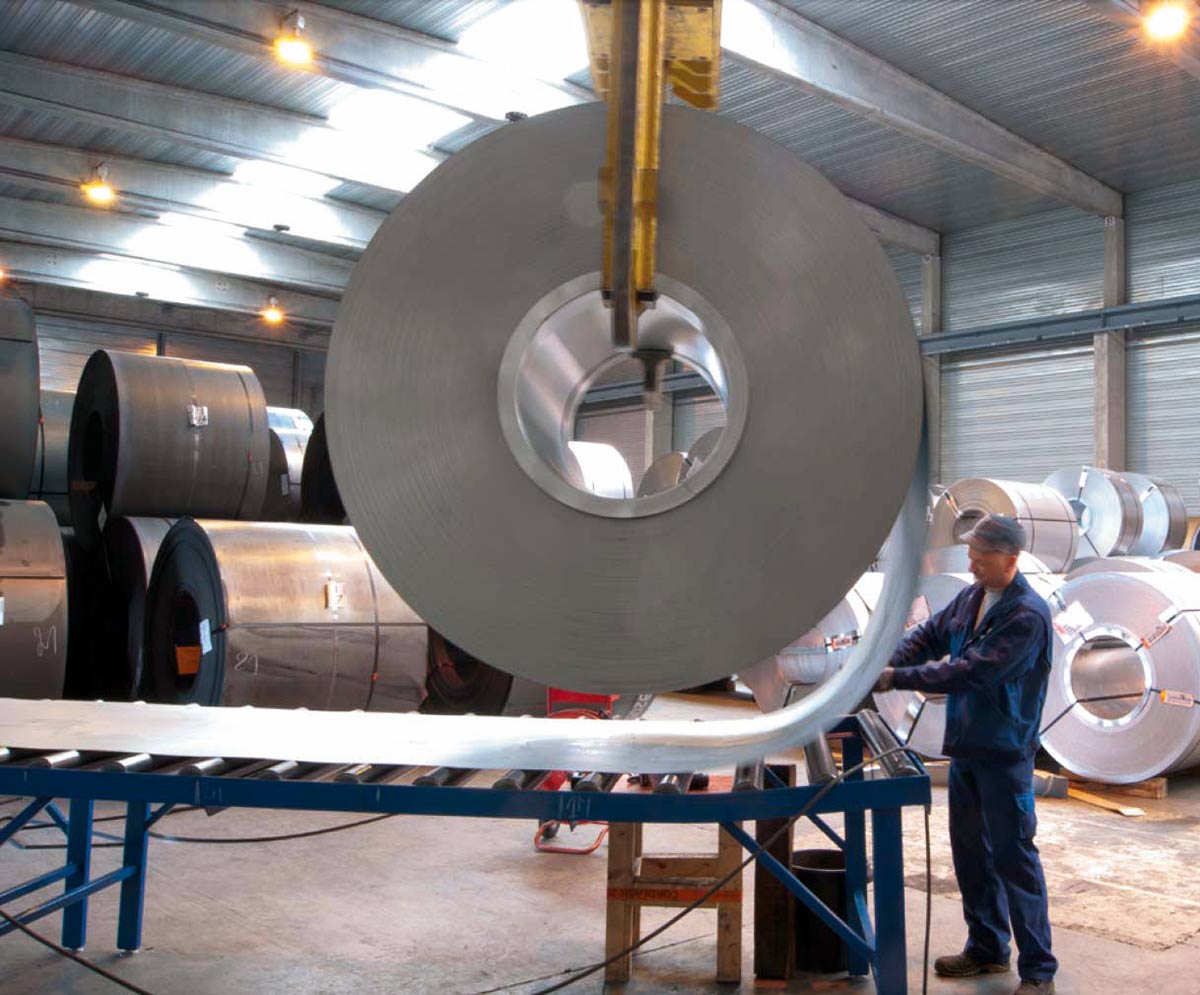Do you know the minimum radius to use for sheet bending?
Bending is one of the most common ways of processing metal. It involves changing the shape of a sheet by bending it, generating permanent deformation. Successful bending depends on various factors. One of these factors is the minimum bend radius.
Do you know how to determine this?
Below we’ll give you a few hints.
The process of sheet bending is one of the most common industrial processes of plastic deformation; it exploits the material’s capacity of resistance, before reaching breaking point. This type of permanent deformation of sheet metal is done by placing the material under strain, which exceeds its maximum elasticity.
Bending generally produces permanent deformations in limited areas of the sheet, particularly in areas where the aim is to modify the shape of the sheet. Plastic deformation occurs when the material is placed under a load that lies between the yield limit and the breaking load. These two values can be deduced from a tensile test which is used to understand the behaviour of materials, and their mechanical properties.
Successful bending depends on many variables related to the characteristics of the material and the machine set-up. To optimise the control of the bending process, you need to carefully manage all the parameters that make up the final quality of the bend, by correctly evaluating the overall strain and deformation created within the bent components.
Points to consider during the bending process:
- The elastic return of the material after the bend. This strongly depends on the relationship between the bend radius and the sheet thickness (ri/s), the characteristics of the material, (particularly the elastic module and yield limit) and the influence of the previous plastic deformation processes. To obtain the required bend angle, the elastic return must be suitably compensated during the bending process.
- The relationship between the bend radius (ri) and the sheet thickness (s). As the greatest strain during the bend is borne by the fibres of the material on the outermost corner of the bend, this strain is all the greater, the lower the ri/s ratio; this is due to the shifting of the neutral axis along which the fibres of the material are not deformed, and which divides the part of the thickness where the material fibres are being straightened, from where they are compressed. Under ideal conditions this axis would be halfway, in the thickness; this condition occurs with a ri/s ratio above 2 (ri/s>2); however, where the ratio is less than or equal to 2 (ri/s<= 2), the neutral axis shifts to approximately one-third of the thickness, towards the inside of the bend, which leads to greater straightening on the external fibres of the material, consequently thinning the thickness leading to the possibility of breakage.
It is important not to fall below certain values for the bend radius. These values are determined by the degree of deformation of the external fibres of the sheet, and depend on its thickness.
Determining the minimum bend radius (ri) is particularly important.
Based on experimental data, the minimum bend radius (ri) can be determined as follows:
ri=c x s;
where:
- s is the thickness of the material;
- c is a coefficient that depends on the type of material and the conditions of the bend.
For low carbon steel from cold forming (e.g. DX51) this corresponds to the value of 0.50.
Also note that the value of the coefficient c, based on experimental data, will vary depending on the orientation of the sheet compared to the direction of sheet rolling.
You also need to remember the direction of the material fibres, as the values change if the bend takes place along the fibres, or transversely.
This is confirmed by the empirical values of the coefficient c used in practice, which are deduced by comparing the behaviour of the sheet which is being bent, depending on the rolling direction and the type of material:
Transverse bend in the direction of rolling
- Soft material c=0.5
- Hard material c=0.7
- Hard elastic material c=1.7
Longitudinal bend in the direction of rolling
- Soft material c=0.7
- Hard material c=1.0
- Hard elastic material c=2.5
These indications show the importance of knowing the mechanical properties of a material in order to verify the basic conditions required for a successful bend.
The technical specifications of the materials you are going to buy need to be defined in detail, without underestimating the implications of the processes that the steel will be used in.
Talk to our advisers, to find out the most appropriate material for your needs.
Are you looking for the right steel?
With Sangoi you can have much more thanks to the exclusive Steel Up® formula.
 Alessandra Sangoi
Alessandra Sangoi
CEO

